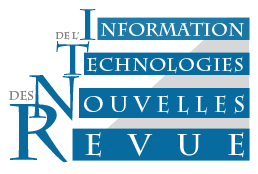Machine Learning for the Semantic Web: filling the gaps in Ontology Mining
In EGC 2017, vol. RNTI-E-33, pp.3-4
Résumé
In the Semantic Web view, ontologies play a key role. They act as shared vocabularies
to be used for semantically annotating Web resources and they allow to perform deductive
reasoning for making explicit knowledge that is implicitly contained within them. However,
noisy/inconsistent ontological knowledge bases may occur, being the Web a shared and dis-
tributed environment, thus making deductive reasoning no more straightforwardly applicable.
Machine learning techniques, and specifically inductive learning methods, could be fruitfully
exploited in this case. Additionally, machine learning methods, jointly with standard reason-
ing procedure, could be usefully employed for discovering new knowledge from an ontological
knowledge base, that is not logically derivable. The focus of the talk will be on various ontol-
ogy mining problems and on how machine learning methods could be exploited for coping with
them. For ontology mining are meant all those activities that allow to discover hidden knowl-
edge from ontological knowledge bases, by possibly using only a sample of data. Specifically,
by exploiting the volume of the information within an ontology, machine learning methods
could be of great help for (semi-)automatically enriching and refining existing ontologies, for
detecting concept drift and novelties within ontologies and for discovering hidden knowledge
patterns (also possibly exploiting other sources of information). If on one hand this means to
abandon sound and complete reasoning procedures for the advantage of uncertain conclusions,
on the other hand this could allow to reason on large scale and to to dial with the intrinsic uncer-
tainty characterizing the Web, that, for its nature, could have incomplete and/or contradictory
information.

